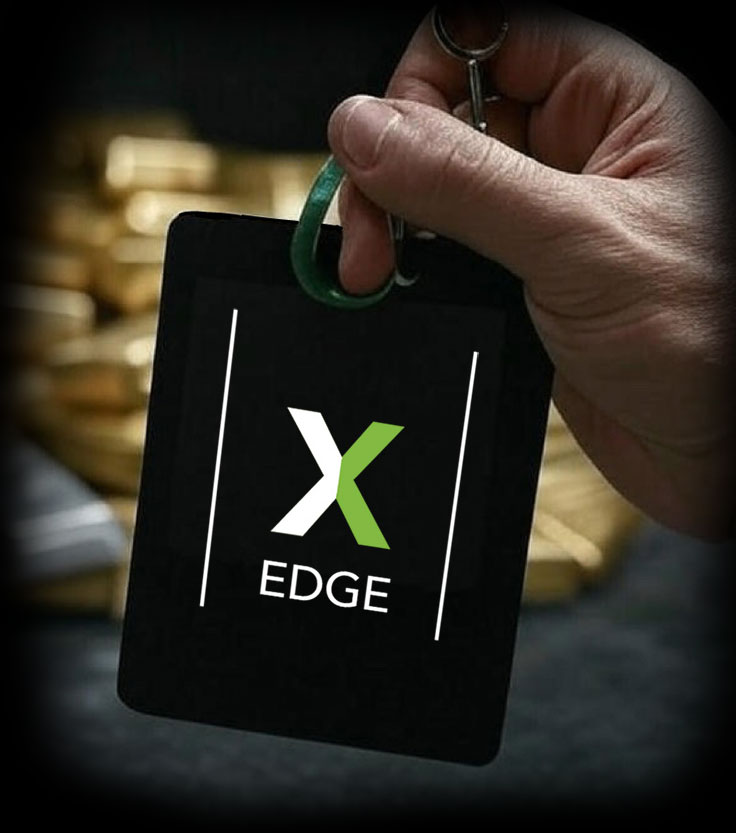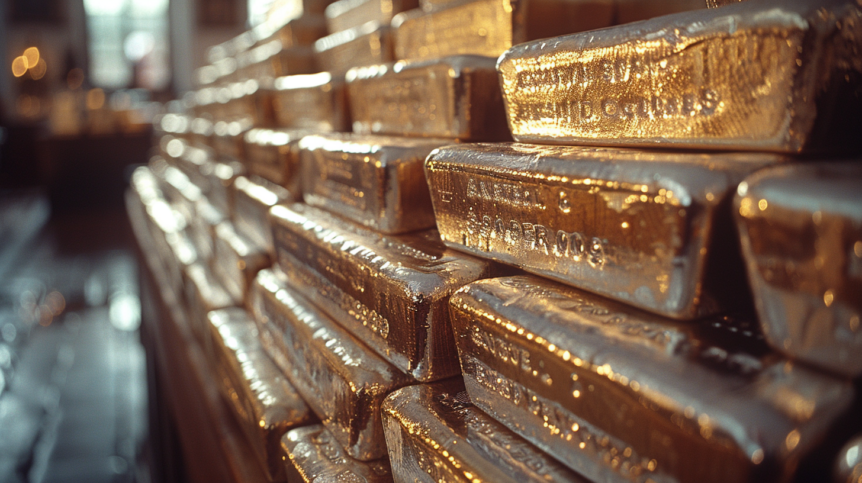Silver prices are shaped by several key factors, from industrial demand to economic conditions. As both a commodity and precious metal, silver’s value is influenced by shifts in supply, technological advancements, inflation, and more. To make smart investment choices, it’s crucial to understand these dynamics. Here’s a clear breakdown of the main factors affecting silver prices, along with the upsides and downsides for each—helping you stay ahead in the silver market.
| Key Takeaways |
|---|
| Industrial demand from electronics and renewable energy sectors significantly influences silver prices. |
| Economic growth can reduce silver’s appeal as investors shift to traditional assets. |
| Silver acts as a hedge during periods of rising inflation, boosting its demand. |
| Low interest rates increase silver’s appeal, while higher rates diminish demand. |
| Technological advancements may increase silver use or introduce alternatives that reduce its demand. |
| OWNx offers a fractional ownership of silver bars, making it easy to invest in silver in small amounts and ensuring you get more silver for your money. |

Start buying precious metals at cost.
1: Supply and Demand
Supply and demand dynamics heavily influence silver prices. Higher demand from industrial sectors combined with limited mining output can lead to price increases. However, if supply outpaces demand, prices may fall. Investors need to stay informed about global mining trends and industrial needs.
Upside:
- Increased Industrial Use: Silver plays a vital role in high-tech industries like electronics, solar panels, and medical devices. As these industries grow, silver demand rises, which pushes prices upward.
- Limited Supply: If mining output is reduced due to regulatory challenges or natural resource depletion, silver’s scarcity increases, driving up its price.
Downside:
- Oversupply: If silver mines increase production or recycling efforts grow, an excess supply can flood the market, leading to a decrease in prices.
2: Economic Trends
Silver is considered a reliable store of value during economic crises, which increases its price. However, in stable times, silver may lose its appeal, as other assets become more attractive. Monitoring global economic indicators can help predict silver price movements.
Upside:
- Recession Hedge: During economic downturns, investors often flock to silver as a safe-haven asset. This shift in demand can push silver prices higher, especially when confidence in traditional investments declines.
- Weaker Dollar: A declining U.S. dollar makes silver cheaper for foreign investors, increasing demand and boosting prices globally.
Downside:
- Strong Economic Growth: When the economy is stable and growing, silver becomes less attractive to investors, who may prefer more traditional assets like stocks. This shift can reduce silver demand and lead to lower prices..
3: Interest Rates
Silver doesn’t generate interest or dividends, so its value tends to rise when interest rates are low. However, as interest rates increase, investors may move their money toward interest-bearing investments, reducing silver’s appeal.
Upside:
- Low Interest Rates: When interest rates are low, silver becomes more appealing as an investment because other income-generating assets like bonds and savings accounts yield minimal returns.
Downside:
- High Interest Rates: Rising interest rates make traditional income-generating investments, like bonds or savings accounts, more attractive than non-yielding assets like silver, leading to lower demand and prices.
4: Inflation
Silver is often sought after in times of rising inflation, as it protects against currency devaluation. When inflation is stable or low, silver’s role as an inflation-resistant asset weakens, leading to reduced interest from investors.
Upside:
- Inflation Hedge: Silver has historically been used as a hedge against inflation. As inflation rises, people turn to tangible assets like silver to preserve their purchasing power, driving up its price.
Downside:
- Low Inflation: During periods of low or stable inflation, the urgency to invest in silver as an inflation hedge decreases, lowering its demand and price.
5: Industrial Demand
Silver’s industrial use accounts for nearly half of its global use. When sectors like renewable energy or electronics grow, silver demand rises. However, the emergence of new technologies or alternatives could reduce silver’s necessity, impacting prices.
Upside:
- Expanding Sectors: Silver is needed in industries like electronics, medical devices, and renewable energy, particularly solar panels. Growth in these industries leads to increased demand for silver, driving prices higher.
Downside:
- Technological Substitutes: If technological advancements reduce the use of silver or introduce cheaper alternatives, industry’s demand for silver could decrease, causing prices to fall.
6: Silver Mining Output
Mining output plays a pivotal role in silver pricing. Any disruptions in production tend to tighten supply, pushing prices up, while an increase in production can result in oversupply, driving prices down. Investors should monitor global mining activities and potential new discoveries to anticipate price changes.
Upside:
- Disruptions in Mining: Strikes, environmental challenges, or regulatory changes that slow down mining operations can reduce the supply of silver, pushing prices upward due to scarcity.
Downside:
- Increased Mining Production: When mining operations ramp up or new silver discoveries are made, this increase in supply can lead to lower prices as more silver floods the market.
7: Technological Advances
As technology evolves, new applications for silver in industries like clean energy can spur increased demand. However, the development of alternatives or more efficient materials could decrease reliance on silver, impacting its long-term price stability.
Upside:
- New Industrial Uses: Technological innovations, particularly in high-growth sectors like electric vehicles and renewable energy, can lead to new uses for silver, boosting demand and prices.
Downside:
- Technological Substitutes: If alternatives to silver are developed or technologies that require less silver emerge, demand could fall, reducing prices.
8: Investment Demand
Investment demand fluctuates based on global financial sentiment. When markets become volatile, investors often turn to silver for stability. However, when confidence returns, many shift back to stocks, bonds, or even gold, reducing silver demand.
Upside:
- Safe-Haven Appeal: During times of economic uncertainty, silver often attracts more investors seeking stability. As confidence in other investments declines, silver becomes a popular choice, driving up demand and prices.
- Physical Silver Investment: Interest in owning physical silver, such as bullion or coins, can increase demand and push prices higher.
Downside:
- Shift in Investor Sentiment: When confidence in the stock market or other investments rebounds, demand for silver decreases, causing prices to fall.
- Competition with Gold: Gold often overshadows silver in times of crisis, drawing away potential silver investors.
9: Geopolitical Events
Global political tensions can significantly impact silver prices. During periods of instability or conflict, investors may seek more stable assets like silver, increasing demand and driving prices up. However, when political tensions ease, investors often shift back to other investments, leading to a decline in silver demand and prices.
Upside:
- Increased Demand in Times of Uncertainty: Geopolitical tensions, such as trade wars or conflicts, often drive investors toward silver as a safer, more stable asset.
- Currency Hedge: In regions where local currencies become volatile due to geopolitical unrest, silver serves as a hedge, driving demand.
Downside:
- Reduced Demand in Stable Times: When global political climates are stable, silver demand may decrease as other assets regain their appeal.
10: Currency Fluctuations
Silver prices are sensitive to changes in currency values, especially the U.S. dollar. A weak dollar generally makes silver more appealing to global investors, while a stronger dollar can suppress demand.
Upside:
- Weaker Dollar Boosts Silver Prices: Since silver is priced in U.S. dollars, a weaker dollar makes it cheaper for international buyers, increasing global demand and driving prices upward.
- International Appeal: As the dollar weakens, silver’s affordability in global markets can stimulate increased buying from international investors.
Downside:
- Strong Dollar Lowers Prices: When the U.S. dollar strengthens, silver becomes more expensive for foreign buyers, reducing demand and pressuring prices to fall.
11: Gold-Silver Ratio
The gold-silver ratio represents how many ounces of silver it takes to buy one ounce of gold. A high ratio suggests silver may be undervalued, while a low ratio could signal it’s overvalued. Investors use this ratio as a gauge for buying or selling silver relative to gold.
Upside:
- Historical Correlation: When the gold-silver ratio is high, investors might consider silver undervalued relative to gold, leading to increased demand and price appreciation.
- Silver Catch-Up: Investors often buy silver when they believe it will “catch up” to gold’s price movement, boosting demand.
Downside:
- Overemphasis on Gold: During times of economic or market stress, investors tend to favor gold over silver, which can weaken demand for silver and lower its price.
12: Global Economic Conditions
Global economic conditions play a crucial role in determining silver’s value. In times of economic distress, silver tends to rise in demand, but in periods of economic growth and stability, other investments can overshadow silver.
Upside:
- Global Recession: A global economic slowdown often leads to increased demand for precious metals like silver, as investors seek stability and security.
- Silver as a Hedge: During periods of economic uncertainty, silver offers a hedge against declining fiat currencies and volatile stock markets.
Downside:
- Economic Recovery: As economies recover and financial markets stabilize, silver’s appeal as a hedge diminishes, leading to lower demand and reduced prices.

Start buying precious metals at cost.
13: Technological Developments
Silver’s role in technology, especially in fast-growing sectors like solar energy and electronics, is vital. As these industries expand, silver demand grows. However, technological advancements could introduce substitutes, potentially weakening silver’s market position.
Upside:
- Increased Demand from Innovation: New technologies, particularly in clean energy, electric vehicles, and electronics, require silver, driving up industry’s demand and boosting prices.
- Sustainable Energy Growth: The rise in solar power and other renewable energy sectors increases the demand for silver, as it is essential in manufacturing photovoltaic cells.
Downside:
- Technological Substitutes: If industries find cheaper or more abundant alternatives to silver, industrial demand could decrease, leading to lower prices.
Conclusion
Silver’s price is shaped by a variety of factors, from industrial demand to economic trends and geopolitical events. Understanding these influences is an important step for investors seeking to navigate silver’s volatile market. Whether driven by technological innovation, global political tensions, or shifts in the value of the U.S. dollar, silver remains a dynamic and valuable asset in both the industrial and investment realms. By staying informed and recognizing the upsides and downsides of these factors, investors can better position themselves to take advantage of silver’s unique potential in their portfolios.
FAQs
Silver is more affordable than other precious metals like gold and platinum, offering more flexibility for small investors.
Silver prices are influenced by industrial demand, inflation, and shifts in global economic conditions.
Silver price trends directly impact the cost of silver jewelry, making it more expensive during price surges.
Silver mining output affects supply, which influences silver prices, with lower output often driving prices up.
Yes, silver bullion and silver scrap can be sold through reputable dealers, especially when silver prices surge.
The Silver Institute offers research and data on silver price trends and global market influences.
When gold prices surge, silver often experiences a corresponding rise due to increased demand for precious metals.
Silver jewelry is more affordable than gold or platinum, making it a popular option for buyers looking for precious metals.
